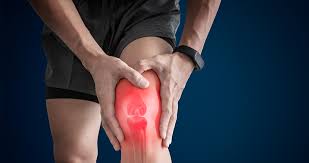Understanding and Managing Carpal Tunnel Syndrome: Effective Pain Relief Strategies

Carpal Tunnel Syndrome (CTS) is a common condition that affects millions of people worldwide. It occurs when the median nerve, which runs from the forearm into the palm of the hand, becomes compressed or squeezed at the wrist. This compression leads to pain, numbness, tingling, and weakness in the hand and arm, often making everyday tasks difficult.
What Causes Carpal Tunnel Syndrome?
Several factors contribute to the development of CTS:
- Repetitive Hand Motions: Activities that involve repetitive hand and wrist movements, such as typing, sewing, or using tools, can lead to CTS over time.
- Anatomical Factors: Some people may have a smaller carpal tunnel or a wrist injury that narrows the tunnel, increasing the likelihood of nerve compression.
- Health Conditions: Conditions like diabetes, obesity, rheumatoid arthritis, and thyroid disorders can increase the risk of developing CTS.
Symptoms of Carpal Tunnel Syndrome
Recognizing the symptoms of CTS is crucial for early intervention and management:
- Numbness or Tingling: Typically in the thumb, index, middle fingers, and half of the ring finger.
- Pain: Often radiating from the wrist up the arm or down into the fingers.
- Weakness: Difficulty gripping objects or performing fine motor tasks like buttoning clothes.
- Nighttime Symptoms: Many individuals experience worsened symptoms at night, which can disrupt sleep.
Diagnosing Carpal Tunnel Syndrome
If you suspect you have CTS, it’s important to seek medical evaluation for a proper diagnosis. Your healthcare provider may:
- Perform a Physical Examination: Checking for swelling, tenderness, or weakness in your hand, wrist, and fingers.
- Conduct Nerve Tests: Nerve conduction studies or electromyography to measure the electrical activity in your muscles and nerves.
- Review Your Medical History: Discussing your symptoms, work habits, and any underlying health conditions.
Treatment Options for Carpal Tunnel Syndrome
Treatment for CTS aims to relieve symptoms and prevent further nerve damage. Depending on the severity of your condition, your doctor may recommend:
- Conservative Treatments:
- Wrist Splinting: Wearing a splint to keep your wrist in a neutral position can relieve pressure on the median nerve, especially at night.
- Activity Modification: Adjusting your work habits or using ergonomic tools to reduce strain on your wrists.
- Medications: Nonsteroidal anti-inflammatory drugs (NSAIDs) or corticosteroid injections to reduce pain and inflammation.
- Physical Therapy: Exercises to strengthen muscles and improve flexibility in the wrist and hand.
- Surgical Options:
- Carpal Tunnel Release: If conservative treatments don’t provide relief, surgery may be necessary to relieve pressure on the median nerve. This outpatient procedure involves cutting the ligament that forms the roof of the carpal tunnel to create more space for the nerve.
- Endoscopic Surgery: A minimally invasive technique where a small camera (endoscope) is used to guide the surgery, resulting in smaller incisions and faster recovery times compared to traditional open surgery.
Lifestyle Changes to Manage Carpal Tunnel Syndrome
In addition to medical treatments, making lifestyle adjustments can help manage CTS symptoms and prevent worsening:
- Take Breaks: Regularly rest your hands and wrists during repetitive tasks.
- Practice Good Posture: Maintain proper ergonomics at your workspace to reduce strain on your wrists and hands.
- Use Assistive Devices: Ergonomic keyboards, wrist rests, and padded mouse pads can reduce strain.
- Exercise Regularly: Strengthening exercises for the wrists and hands can improve flexibility and reduce symptoms.
- Maintain a Healthy Weight: Excess weight can increase pressure on the median nerve.
Alternative Therapies for Carpal Tunnel Syndrome
While more research is needed to confirm their effectiveness, some people find relief from CTS symptoms through alternative therapies such as:
- Acupuncture: Stimulating specific points on the body to relieve pain and improve nerve function.
- Yoga and Stretching: Gentle stretching and yoga poses can improve flexibility and reduce muscle tension.
- Chiropractic Care: Spinal adjustments and manipulations may alleviate symptoms by improving nerve function.
Coping with Carpal Tunnel Syndrome: Emotional and Psychological Impact
Living with chronic pain and physical limitations can take a toll on your emotional well-being. It’s essential to:
- Seek Support: Talk to friends, family, or a therapist about your feelings and challenges.
- Educate Yourself: Understanding CTS and its management can empower you to make informed decisions about your health.
- Stay Positive: Focus on activities and hobbies that bring you joy and fulfillment.
Prevention Tips for Carpal Tunnel Syndrome
Although not always preventable, you can reduce your risk of developing CTS or prevent it from worsening by:
- Practicing Proper Ergonomics: Maintain neutral wrist positions during activities and use ergonomic tools.
- Taking Regular Breaks: Rest and stretch your hands and wrists during repetitive tasks.
- Avoiding Repetitive Stress: Alternate tasks or modify techniques to reduce strain on your hands and wrists.
Conclusion
Carpal Tunnel Syndrome is a prevalent condition that affects many individuals, impacting daily activities and quality of life. Fortunately, with early diagnosis and appropriate treatment, most people can find relief from symptoms and prevent long-term nerve damage. Whether through conservative treatments, surgical intervention, or lifestyle adjustments, managing CTS requires a comprehensive approach tailored to each individual’s needs. By understanding the causes, symptoms, and treatment options for CTS, you can take proactive steps to alleviate pain, regain function, and improve your overall well-being.



